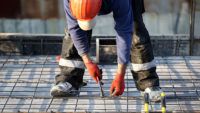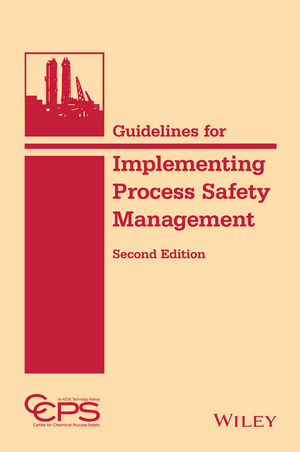Essential gear for hot work

Photo credit: PK Safety
For many US workers, the rising temperatures of summer can pose a considerable health and safety hazard. From construction sites and agricultural lands to kitchens and factory floors, prolonged exposure to high temperatures can lead to heat exhaustion, heat stroke, and even death.
Understanding the dangers of heat stress
When working in hot environments, the body sweats to regulate temperature. Heat stress occurs when the body’s natural cooling systems become overwhelmed, leading to a cascade of symptoms ranging from disconcerting to life-threatening. These include the following:
- Headaches
- Dizziness
- Nausea and vomiting
- Fatigue
- Muscle cramps
- Confusion
If not addressed promptly, heat stress can escalate to heat exhaustion or heat stroke — potentially life-threatening conditions that require immediate medical attention. In addition to direct health risks, prolonged heat exposure can also affect cognitive function and physical performance, diminishing productivity while increasing the likelihood of workplace accidents and injuries.
Cooling PPE
While staying hydrated and taking breaks in shaded areas can provide respite from the heat, cooling PPE offers practical solutions for enhancing worker safety and comfort during hot weather. This essential PPE incorporates innovative features, such as moisture-wicking materials and evaporative cooling, to keep workers comfortable and safe when temperatures reach dangerous levels.
Here are some popular cooling PPE solutions to consider:
Vented hard hats
A staple across industries, hard hats provide workers with crucial head protection. However, traditional hard hats can also trap heat, making them uncomfortable to wear for extended periods when temperatures rise. Vented hard hats address this issue with strategically placed vents to allow air circulation and reduce heat buildup. They also feature moisture-wicking sweatbands and liners that help absorb and dissipate sweat for enhanced comfort. However, according to OSHA, vented hard hats do not meet electrical standards and cannot be used for work with high voltage electricity, chemicals, or molten metals. In these environments, workers need to wear non-vented hard hats that will fully protect against these types of hazards, which include arcs or splashes.
Some of the best vented hard hats are also made from high-density polyethylene (HDPE), providing a lightweight, UV-resistant solution specially designed for higher temperatures.
Cooling hats
Regardless of the work you do, if you do it under the sun, you need a cooling ranger hat in your arsenal. These hats allow you to carry your own portable shade wherever you go, ensuring continuous protection and comfort.
This PPE also incorporates advanced evaporative cooling technology. When soaked in water, the material retains moisture to facilitate cooling without feeling overly wet. The wide brim shields the face and eyes from the sun while the neck shade protects the back of the head — an area most susceptible to sunburn. Their lightweight, breathable fabric and side vents ensure they remain comfortable even during prolonged use.
Cooling safety vests
High-visibility safety vests are critical for worker safety, especially in construction, road work, and other work environments exposed to traffic and moving equipment. However, traditional safety vests can become heavy and uncomfortable in the summer heat. Cooling safety vests made from advanced lightweight and breathable materials offer a pragmatic yet innovative solution.
The best cooling vests feature inner evaporative PVA (polyvinyl alcohol) panels that keep users cool for up to eight hours. PVA material is highly evaporative and feels cooler than ambient air. When exposed to water or sweat, PVA panels absorb moisture. As it evaporates, it draws heat away from the body, creating a cooling effect.
Cooling arm sleeves
Cooling arm sleeves provide sun protection and help keep workers cool by combining moisture-wicking and evaporative cooling technology. This means you can wear them wet for cooling or dry for moisture-wicking comfort. In addition, their breathable stretch material provides light abrasion protection while blocking harmful UV rays.
Cooling arm sleeves can be worn under regular clothing or other PPEs, making them an excellent complement for worker protection and comfort.
Cooling towels and neck wraps
Speaking of complementary pieces, we also recommend adding cooling towels and neck wraps to your summer PPE collection. You can wear these versatile accessories on your head, neck, and wrists or under a ventilated hat to provide instant relief from the heat. Like others on this list, these PPE combine ultra-absorbent PVA with natural evaporation, which provides moisture-wicking and cooling in warm environments.
Whenever it gets too hot, just add water and give it a quick wring. It will continue to provide the soothing, cooling effect necessitated by extreme temperatures.
Safety sunglasses
While it can be easy to overlook, eye protection is crucial for those working under the bright sun. UV light from the sun can damage the eyes, with long-term exposure increasing the risk of eye conditions such as photokeratitis (sunburn) and pterygium (growth on the eye’s surface).
Look for safety glasses featuring a lightweight, semi-rimless design for all-day comfort, soft rubber nose pads to keep the glasses in place, and 99.99% UVA UVB light absorption to maintain clear vision despite the bright sun.
Additional tips for staying cool and safe this summer
While cooling PPEs are crucial for heat stress prevention, they’re not your only line of defense. Here are some additional practices to promote worker safety during hot weather:
Encourage hydration: Employers should provide access to cool drinking water and encourage frequent hydration breaks.
Adjust work schedules: If possible, schedule more strenuous activities for cooler parts of the day, like early mornings, late afternoons, or evenings.
Acclimatize: Gradually increase workload and exposure to hot environments over several days to allow workers to adapt to rising temperatures.
Monitor weather conditions: Keeping an eye on weather forecasts and heat advisories can help employers plan work schedules and take preventive measures on particularly hot days.
Train workers on heat safety: Providing training on the signs and symptoms of heat stress, as well as prevention and first aid measures, can empower workers to take action if extreme heat affects them or their coworkers.
Summer doesn't have to be a season of heat-related hazards for workers. By utilizing innovative cooling PPE, staying hydrated, and implementing mindful work practices, employers can ensure a safe and productive season for everyone.
Looking for a reprint of this article?
From high-res PDFs to custom plaques, order your copy today!








